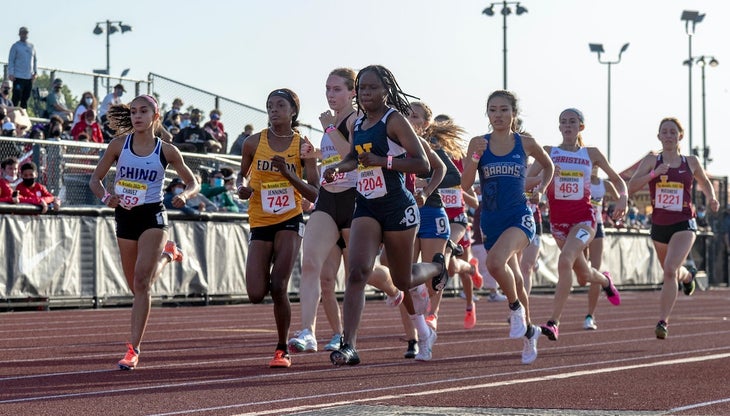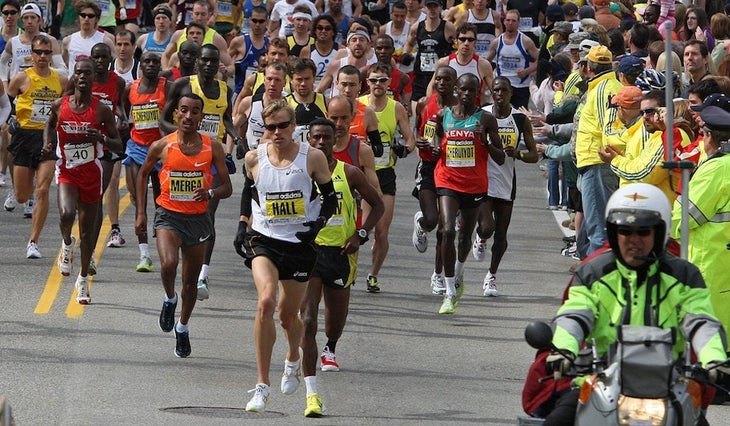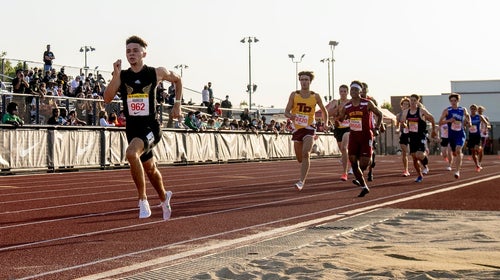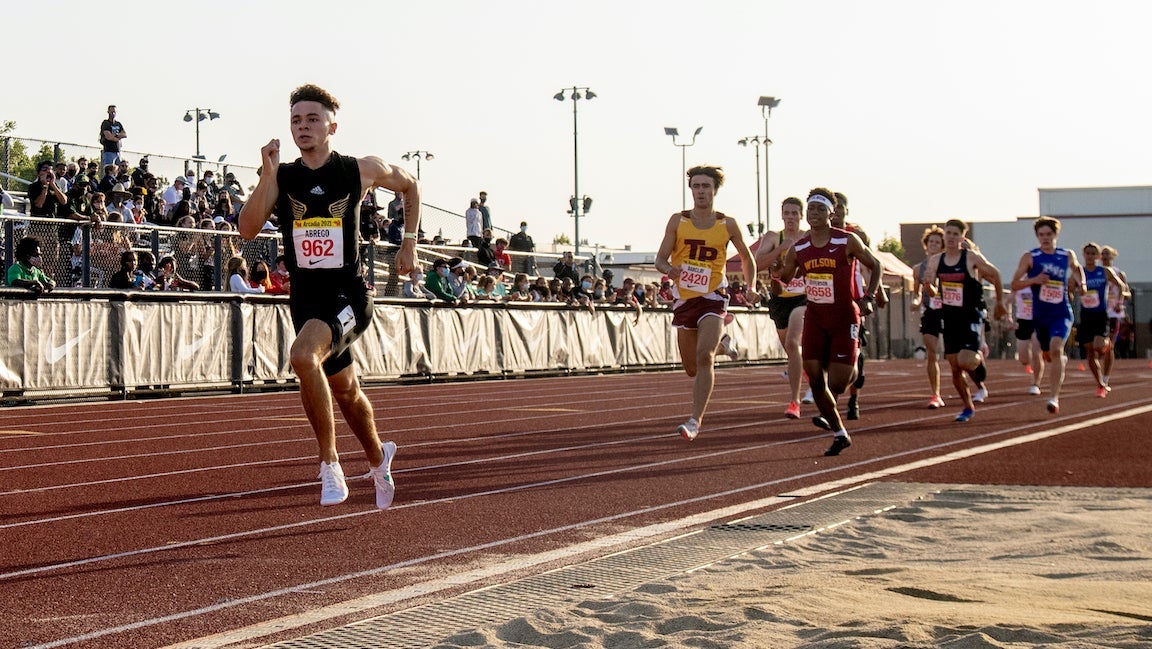The famed Arcadia Invitational took place again early this month. For those unfamiliar with Arcadia, it is a magical track meet where runners are sprinkled with fairy dust that guarantees new PRs. Or, that’s how I remember it.
According to their website, 32 national records have been set and 179 U.S. Olympians have competed in the meet. I am sure the number of PRs is in the hundreds of thousands.
When I was a junior in high school I somehow got into the Arcadia Invitational 3200 meters. At the time I had a personal best in the high 9:30s, but I’m pretty sure my coaches lied and submitted a time of 9:20. I hung onto the back of the pack for as long as I could and ran a 9:22, dragged along by the fairy dust and the fear of finishing last. That remained my personal best throughout high school. I twice ran 9:29, but never approached my PR again.
Thereafter, every race I entered had that entry time next to it: 9:22.
But what did that PR really mean? What did it indicate about my future performances? And how did having it constantly out there affect my self-image and success?
Thinking Beyond the PR
My good friend Scott Abbott, former distance coach at Sacramento State who now heads up the Sacramento Running Association, learned to be skeptical of an athlete’s PR early on. He saw that runners who got into Arcadia tended to have great PRs, but those PRs didn’t correlate with success at the end of the year or into an athlete’s college career.
As a college coach with no scholarships, he had to figure out who was a good bet to be both recruitable and likely to succeed. Many coaches saw a fast PR and misjudged a runner’s “real value.” Especially when it came from a meet like Arcadia.
As a coach, he was less interested in what you’ve done than in what you will do.
Looking at a PR tells us what you can do in the best possible circumstances — under the magical fairy dust of Arcadia, the windless perfection of the Stanford Invitational, the gusty tailwinds of the 2011 Boston Marathon, or a pancake-flat road course on a 50-degree day — for example. It’s not that your time isn’t legit — you certainly earned it — it’s that it doesn’t indicate what your next good race is likely to be.
Similarly, if you are evaluating future potential, knowing you did something once does indicate you can do it. But it doesn’t indicate how much you had to stretch to do it. A runner who runs 4:10 at Arcadia may not be any better than one who runs 4:18 solo to win a local dual meet. Same can be true for a runner whose PR comes from Chicago or CIM versus a slower course like Boston or New York.
If we’re going to reference one number, we shouldn’t use our PR. We should use our 3B.

What is Your 3B, or Third Best Time?
Scott long ago convinced me that an athlete’s third best time is a much better predictor of what he calls “real value,” or how good a runner truly is relative to the competition. Take that blazing fast Arcadia PR and set it aside. Find their third best time and compare that to the lists and rankings to see how it compares. If it stacks up, they have a high “real value.” If it doesn’t, recruit accordingly.
Consider two high school junior 1600 meter runners:
- Runner A has a 4:10 Arcadia PR and a 4:18 3B
- Runner B has a 4:17 non-Arcadia PR and a 4:20 3B
You can bet that Runner A is going to be overvalued by most coaches because of that shiny 4:10, but their respective 3B’s tell you Runner B is (probably) the same caliber as Runner A. He just may not have had the opportunity to show it. If Runner A runs a couple more fast times, only then will his 3B indicate a higher “real value.”
Similarly, if Runner B is consistently hovering around a certain time, with a 3B close to his PR, it may be an indication that a breakthrough is coming. They may be primed to make a leap, and just needs to get into the right setting to do it.
This can apply to elites as well: Ryan Hall ran 2:04:58 for the marathon at that windy Boston in 2011, but his 3rd best time was 2:08:04. At his best, Ryan was much more likely to run a 2:08 than a 2:05.
The same is probably true for you. If you’ve raced enough to have several marks at a given distance, there’s a good chance one or two were great (and one or two were… not). But those are often outliers, where timing and conditions play a major role. When we look at our 3rd best time, we get a better representation of who we consistently are as a runner.

What Question Are You Answering?
The blessing and curse of running is that it is so easy to measure, and that those measurements are so easy to compare. We can measure our own progress and we can measure how we stack up against others. We can use these numbers to define ourselves.
A PR is a huge accomplishment, and something we should celebrate and cherish. I don’t mean to devalue your PR at all when I suggest it’s not that useful. It comes down to what question you’re trying to answer.
I love that 3rd best times remove some of the randomness in evaluating runners and I also like them for an even simpler reason: If you can do something three times, you can be quite confident you can do it a fourth. I can’t say the same for a PR, which is often an outlier. How many of us haven’t beaten a long-standing PR?
More importantly, a subtle shift happens when you start thinking about third best times. You stop focusing on the best case scenario and start focusing on the likely scenario. And that is just a better way to think and prepare in general. It saves you from getting stuck, never measuring up to a mark you only achieved once but now defines the runner you “should” be. It allows you to more accurately analyze your training and race paces.
Whether you’re evaluating how good you really are or trying to predict your next likely “good result,” your PR is more likely to mislead than inform. It’s time we move “beyond the PR.” So tell me, what’s your 3B?
—
Bryan Green competed at UCLA from 1997 to 2002, was a two-time individual qualifier for the NCAA Cross Country Championships in 2000 and 2001, and ran a “3rd best time” of 29:40 in the 10k. He has a Master’s in International Affairs from UC San Diego and spent ten years working as an analyst in Silicon Valley. He is currently the co-founder of Go Be More Apparel, host of the Go Be More and Fueling the Pursuit podcasts, and author of Make the Leap. His passion is sharing powerful ideas to help people go be more in life.


